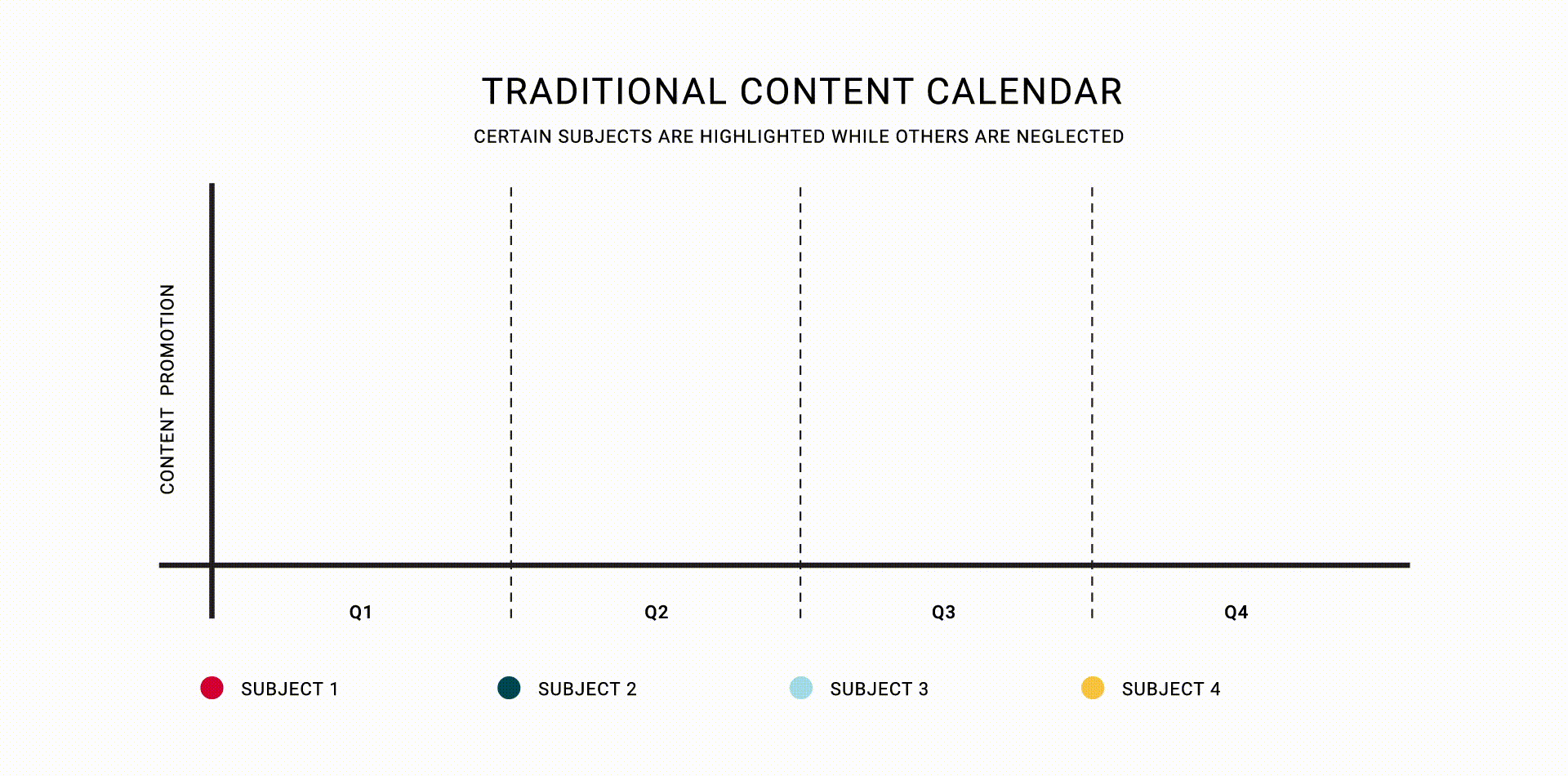Ditch the Editorial Calendar
Say goodbye to the calendar and hang ten instead.
It starts with a vaguely hypothetical musing from on high: “We should start content marketing.” Thus decreed, it falls to the marketing team (or often, just the marketing person) to make it happen.
Of course, it’s not easy to craft a strategy and create compelling content from out of thin air. As a result, the aforementioned marketers will probably look to an editorial calendar for help.
“January, let’s focus on new products. February can be all about retrofits. In March, we’ll focus on aerospace. Nice, Q1 is planned out!”
Here’s the problem.
Two problems, really. First, segmenting content marketing by month can result in your team ignoring entire product lines or industries for 11 months out of the year. Second, because the content is likely shared once and then shelved for the next topic, the analytics are underwhelming.
Not long after, the marketing team will wonder why this new content push isn’t working. Is it actually worth it to create all this stuff?
Here’s an example of a siloed—and often ineffective—content calendar.
You won’t be shocked to hear me say that yes, it’s absolutely worth it to create this stuff. But the strategy has to change.
See, the calendar structure is more of an internal construct than an external one. Your customers don’t wake up on the morning of March 1 and think, “Oh boy! Time to think about nothing except the aerospace industry!”
Instead, just like you and me, they spend a typical work week bouncing from project to project. So what if, instead of shaping your content strategy using the rigid structure of a calendar, it mirrored how your customers already go about their days?
Learn to love the wave.
It’s exactly what it sounds like: an S-shaped line made up of high points (crests) and low points (troughs). Perfectly suited for content marketing strategy.
The crest and the trough are great ways to ensure your latest marketing focus gets all the attention it deserves. Consider the following:
In an editorial calendar, it’s all too easy to one-and-done a piece of content. A good example: you write a press release announcing a new product, then share it on social media when an outlet picks it up. After that, you stop talking about it and move onto the next item on the calendar.
Conversely, the wave is a natural reminder to promote what’s important on a recurring basis—in a variety of ways. The crest of the wave is peak promotion, and the trough is the quieter promotional period.
The real magic happens when you have overlapping sine waves ebbing and flowing in a natural rhythm. When one is cresting, another is troughing. Ideally, overlapping waves can be structured to maximize impact and have a steady flow of compelling and diverse content.
When brainstorming the wave components for a campaign, an end result might look something like this:
1st crest: Launch package (Product video, print ad and press release)
1st trough: Organic social media posts
2nd crest: Customer testimonial / Application story
2nd trough: Key benefits spotlight
3rd crest: Trade show premarketing
3rd trough: Blog post
4th crest: Social media, Google and YouTube ads
4th trough: Eblast
5th crest: Email drip campaign
5th trough: Key features/specs spotlight
Sayonara, editorial calendar.
The phrase “editorial calendar” is a good one. It makes it sound like there’s a rock-solid plan in place, backed by expertise. But in reality, it’s a flawed system that makes it likely companies will publish one piece of content and immediately move onto what’s next.
This next quarter, try using the wave as the foundation of your content strategy. Identify what’s important, then assign tactics to crests and troughs. You’ll be surprised how well it works (and how much fun it is).
And of course, if you need an expert B2B marketing team to improve your standing in your corner of the manufacturing industry, talk to Ivor Andrew. Content marketing strategy and execution is one of the things we focus on every day.



